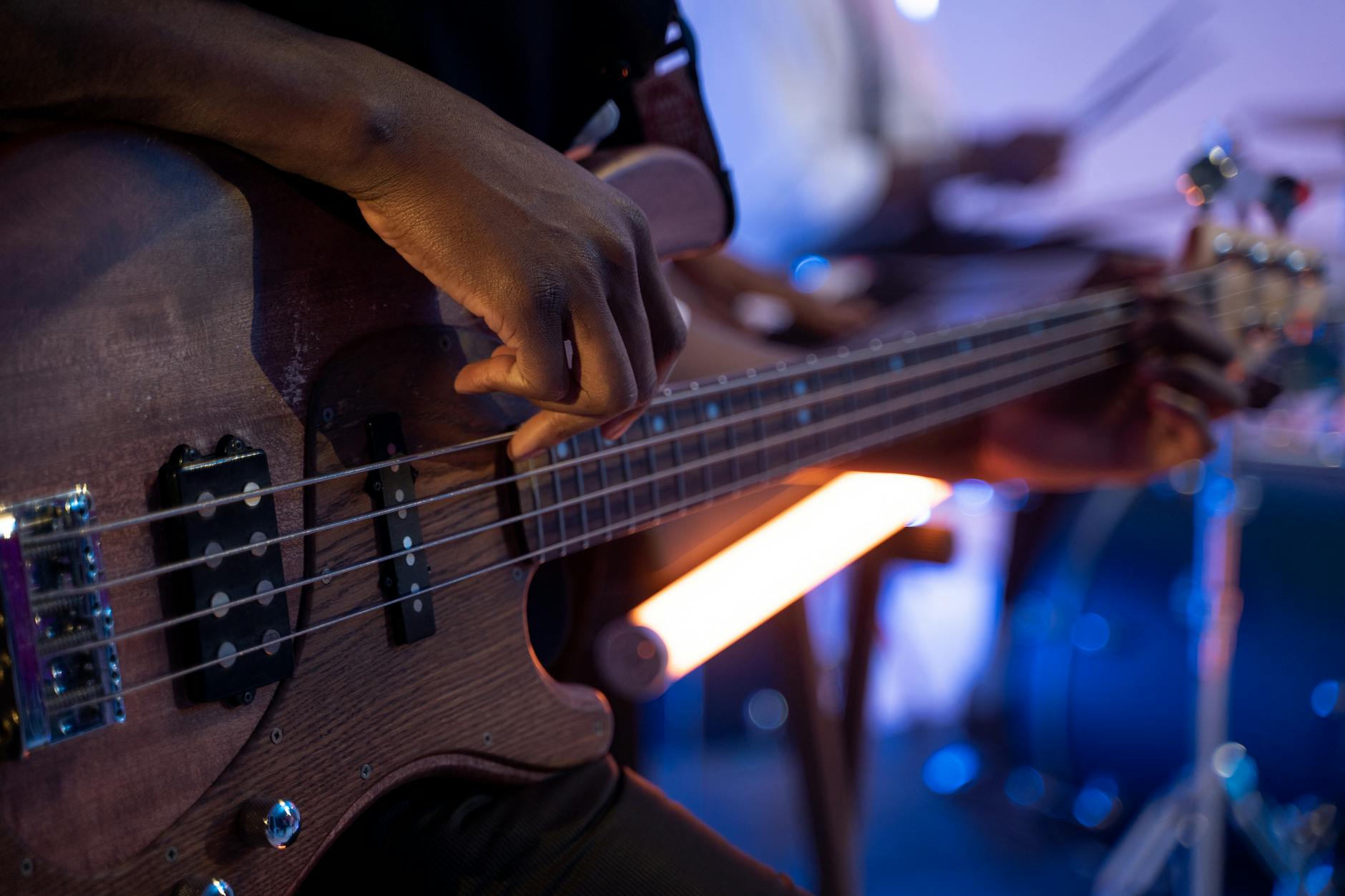How to Play Hide Away by Freddie King – Beginner Blues Guitar Tutorial
Master Hide Away Freddie King guitar tutorial with step-by-step tips, tabs, and play-along video for fast progress. Start playing blues now!

Want to play one of the most iconic blues instrumentals ever—without needing advanced chops? Turns out, Freddie King’s ‘Hide Away’ is the perfect place to start. This isn’t some unreachable virtuoso standard: it’s a song beginners can tackle step by step, thanks to its repetitive sections and straightforward riffs. The best part? Every riff you master builds real blues technique—hammer-ons, pull-offs, slides, and that signature shuffle groove. With the right resources—clear tab and a solid play-along video—the learning process is smooth. This tutorial breaks down every section, highlights the details beginners struggle with, and gets you playing the classic version in your living room. Whether you’re working on an electric, acoustic, or even experimenting with Open E tuning, here’s how to approach ‘Hide Away’ the beginner-friendly way.
What You'll Learn:
- Step-by-step guide to learning ‘Hide Away’ from scratch
- Beginner-friendly tabs and video reference included
- Breaks song into intro, main riff, turnaround, and outro
- Covers essential blues techniques: hammer-ons, pull-offs, slides, shuffle rhythm
- Troubleshoots common mistakes for new players
- Tips for both electric and acoustic (plus Open E adaptation)
What You Need to Play ‘Hide Away’ by Freddie King (Guitar, Tuning, Tab, Video)
The beauty of ‘Hide Away’ is that it doesn’t require expensive gear or complex setups. Most beginners already have what they need to dive in. Here’s what sets you up for success:
Choosing Your Guitar and Setup
Any standard six-string will work. Electric guitars sound closer to the original Freddie King recording, but acoustic players shouldn’t feel left out. The song's groove and riffs come through on either type. For electric guitarists, dialing in a blues tone is easy: start with the bridge pickup, set your amp’s gain around 3, treble near 7, and add just a touch of mild overdrive or compression if available. Avoid heavy distortion—it will bury the guitar’s dynamics. Classic gear picks like the Boss SD-1 Overdrive and a clean Fender Twin Reverb bring out the tune’s snappy phrasing.
Tuning and Tab Resources
Standard tuning (E A D G B e) is used for most ‘Hide Away’ tutorials. Some players experiment with Open E tuning, especially on cigar-box guitars or when looking to simplify slide riffs (Brent Robitaille's Open E lesson is a solid resource). For the classic Freddie King version, stick with standard tuning first—this keeps the licks familiar and lets you follow mainstream tabs and videos.
For tabs, rely on artist-approved sources like GuitarInstructor.com's 'Hide Away' tab play-along. These official transcriptions nail the details and offer both standard and beginner-friendly notation. Many beginner video lessons, such as those found on RockClass101, split the song into logical sections, so you aren’t overwhelmed by the full arrangement all at once.
- Electric or acoustic guitar – both work well
- Standard tuning (E A D G B e); Open E for variations
- Simple amp setup: bridge pickup, low gain, some treble, mild overdrive (if available)
- Tab from reputable sites and a clear play-along video for visual reference
Sectional learning and chunking—breaking ‘Hide Away’ into intro, main riff, and outro—make the song manageable. This structure is why the song works so well as a first blues instrumental.
Hide Away Freddie King Guitar Tutorial: Step-by-Step Breakdown
Learning ‘Hide Away’ as a beginner means tackling the song one section at a time. The original tune is built from short, catchy riffs—each with its own flavor and set of techniques. Here’s how to master every part, following the flow of most high-quality tutorials and the best official tabs.
- Break the song into: Intro riff, Main melody, Supporting riffs, Blues turnaround, Outro
- Practice each section slowly with the tab in front of you
- Use video timestamps to match tab to playing position
Learning the Intro Riff
This is where the magic starts. The intro riff combines the shuffle rhythm with sliding double-stops (G and B strings). Start at the 9th fret, slide down to the 7th fret, and avoid hitting the G string on the 8th. Many beginners misplace this slide—slow practice ensures accuracy. Fingerings: index on the 7th fret, ring on the 9th. Pick G and B together, slide evenly in tempo, and keep your right hand relaxed. Watch for the rhythm—this swing shuffle feel sets up the rest of the tune.
Try This Now:
- Play the intro riff slowly: 9th to 7th fret (G/B strings), keeping even timing.
- Count out loud: “One and two and three...” to internalize the shuffle groove.
Many video lessons—such as those on RockClass101—show this riff with close-up finger shots. Matching your left hand to these visuals will reinforce proper movement (see visual reference).
Mastering the Main Melody and Riffs
The main melody forms the backbone of ‘Hide Away.’ It features repetitive single-note phrases and classic blues articulations. Important details:
- Hammer-ons and pull-offs: The first two measures often use these to add slur and swing. Start slow—accuracy beats speed every time.
- Slides: Many riffs move up and down the fretboard with slides, especially on the high strings.
- Finger placement: Use your index and ring fingers primarily, but stay flexible—pivot your hand for stretches over three frets.
- Supporting riffs (e.g., "Peter Gunn Theme" or "Guitar Boogie Shuffle") add flavor and help you practice new techniques.
Tab tip: Highlight difficult bars and practice them as loops. Some tabs mark repeat endings—learn the first ending fully before adding the alternate. Reinforcement through repetition is key for these patterns.
Blues Turnaround and Outro
The turnaround closes the 12-bar sequence and moves the song back to the top. In ‘Hide Away,’ it uses a mix of single notes, double-stops, and quick slides. Focus on clean transitions in the turnaround—the hand often shifts position quickly. Many lessons suggest isolating this section with a metronome before playing it with the whole song. The outro generally echoes the intro or main riff, sometimes adding extra bends or slides for flavor.
Practice Move:
- Isolate the turnaround, using a metronome at 60bpm
- Gradually increase tempo as notes get cleaner
Remember: Sectional practice—intro, main riff, turnaround, outro—reduces cognitive load and builds muscle memory. Master each part before stringing the whole song together.
Essential Blues Techniques in ‘Hide Away’ for Beginners
‘Hide Away’ stands out because it packs so many classic blues techniques into a single, beginner-friendly instrumental. Every riff is a chance to practice real-world blues vocabulary.
Hammer-Ons, Pull-Offs, and Slides Explained
These techniques drive the song’s character. In the riff sections, hammer-ons (striking a note with a left-hand finger without picking) and pull-offs (lifting a finger to allow a lower note to ring) are everywhere. Slides, especially from frets 9 to 7 on G and B strings, provide that greasy Texas vibe. Here’s a quick breakdown from the actual riff:
- Try a hammer-on: Pick the 5th fret, then hammer-on to the 6th with your ring finger on the B string.
- For slides: Start on the 9th fret, strike, and slide smoothly to the 7th. Repeat for accuracy.
- Pull-off: Fret the 7th, pick, then quickly pull your finger to sound the open string below.
Tab examples from artist-approved Hal Leonard tab help visualize these articulations and reinforce correct finger movement.
Blues Shuffle Rhythm and Groove
The shuffle groove is the heartbeat of ‘Hide Away.’ To nail it, count the rhythm as “one-and, two-and…” and aim for a slight swing on each eighth note. Right hand should be loose, letting the pick bounce off the strings. Beginners often rush the shuffle—slow down, lock into a relaxed tempo, and let the pulse drive the feel. For strumming, use even downstrokes or a down-up action that matches the swing. Matching melody and rhythm is key—this is how real blues guitarists “make it sound right.”
- Practice the rhythm separately before adding the melody
- Loop short sections until the groove feels natural
Tying technique drills directly to the song’s riffs is the best way to build lasting blues skills.
Play-Along Video: Practice ‘Hide Away’ with Tab and Slow Tempo
Play-along videos are a game changer for learning instrumentals like ‘Hide Away.’ They let you see finger placement, match timing, and hear every note in context—all while playing through with slow or full-speed audio.
How to Use the Play-Along Video Effectively
- Loop individual sections—most platforms feature repeat or AB looping to target tricky licks
- Adjust playback speed for slow practice, then gradually increase as accuracy improves
- Match the tab to the section shown in the video—most quality lessons mark timestamps for each major part
Chunk your practice: work Intro → Main riff → Turnaround → Outro, one at a time. Focus on one until it’s clean, then move to the next. As comfort grows, link sections for longer play-throughs. Using a video and tab together builds visual, auditory, and tactile memory—this is why modern method books and educational resources emphasize multimodal learning (see section-based learning tips).
Pro tip: Slow down stubborn passages to 60% speed, then record yourself at each tempo jump. This keeps playing neat and highlights riffs that need extra work.
Troubleshooting: Common Beginner Mistakes When Learning ‘Hide Away’
Almost every new player hits a few speed bumps while learning ‘Hide Away.’ Here’s what typically causes problems and how to fix each issue:
- Missed notes on slides—usually the G string slips to the 8th fret instead of landing squarely on 7
- Struggling to keep shuffle rhythm steady through fast transitions
- Hammer-ons and pull-offs sounding weak or getting lost in the groove
- String noise between sections—letting open strings ring accidentally
- Trying to play too quickly, sacrificing clarity for speed
Fixing Timing and Rhythm Problems
The trick is slowing everything down. Use a metronome at 60-70bpm. Tap your foot, clap along, or count out loud for bars that trip you up. If a certain measure falls apart, isolate it and loop until muscle memory kicks in. Most players see big improvements by breaking tricky bits into two-beat phrases.
Improving Technique and Clean Playing
Hammer-ons and pull-offs need finger strength—practice pressing hard enough to sound the note cleanly, but not so hard you lose control. For slides, focus on deliberate movement, and always check finger placement visually for accuracy. Reduce string noise by gently muting unused strings with the palm or spare fingers. Every small win counts—so recognize improvement, even when progress feels slow. Over time, these details become second nature.
Conclusion
Learning ‘Hide Away’ by Freddie King isn’t just adding a classic instrumental to the repertoire—it’s building the foundation of real blues guitar. The song’s approachable riff structure, repeatable patterns, and classic phrasing give beginners a rare window into both the history and the technique of blues playing. Take time to master each section: intro, main riff, turnaround, and outro. Nail the shuffle, get confident with the slides and hammer-ons, and don’t shy away from slow, deliberate practice. This is the path to true blues feel—the same one Freddie King took into the studio in 1960. When each section feels locked in, try experimenting with new blues instrumentals to expand phrasing and musical confidence. Players who conquer ‘Hide Away’ step into the lineage of blues guitar in the most authentic way—one riff at a time.
Share progress, ask questions, and keep exploring the blues. The next classic riff might be just around the corner.
Frequently Asked Questions
What are easy blues instrumentals for beginners?
Some of the most approachable blues instrumentals for new players include ‘Hide Away’ by Freddie King, ‘Steppin' Out’ by Eric Clapton (John Mayall), and ‘Honky Tonk’ by Bill Doggett. Each offers distinct riffs, repetitive structures, and classic blues phrasing perfect for building foundational skills. ‘Hide Away’ stands out for its combination of accessible riffs and essential blues techniques like slides and shuffles.
How do you play Hide Away on guitar?
To play ‘Hide Away’ by Freddie King on guitar, start in standard tuning and break the song into intro, main riff, turnaround, and outro sections. Learn each part slowly using tab and a play-along video, focusing on slide accuracy, hammer-ons, pull-offs, and the shuffle rhythm. Piece each section together at a comfortable tempo, increasing speed as confidence grows.
What is the chord progression of Hide Away?
‘Hide Away’ is based on a 12-bar blues progression in E, featuring E7, A7, and B7 chords. Some riffs incorporate quick diminished sequences and passing chords to add flavor. The classic structure echoes blues standards and makes it easy to follow and jam along.
Is Hide Away played in standard or Open E tuning?
Freddie King's original ‘Hide Away’ is played in standard tuning, but many modern adaptations—especially for cigar-box guitar—use Open E for easier slide riffs. Beginner guitarists should start with standard tuning, then try Open E for variety or if playing on alternate instruments.
Key Takeaways
- Sectional learning and practice loops make ‘Hide Away’ accessible to beginners
- Essential blues techniques (hammer-ons, slides, shuffle rhythm) are built into the tune
- Play-along videos and slow tab reinforce accuracy
- Mistakes get solved with slow practice and focus on clean articulation
Related Topics
Explore more articles in these topics to deepen your knowledge.
Related Articles

How to Play Hide Away by Freddie King – Iconic Blues Instrumental Riff Tutorial
Master Hide Away Freddie King guitar tutorial—learn riffs, tabs, and pro-level groove. Perfect for intermediate blues players. Start your lesson now!

How to Play Ed Sheeran’s 'Perfect' on Guitar with Simple Chords
Learn how to play Perfect Ed Sheeran guitar with simple chord shapes and clear step-by-step rhythm tips. Perfect for beginners wanting real results fast.

How to Play Wonderwall on Guitar
Master how to play Wonderwall on guitar with clear chord diagrams, easy transitions, and simple strumming techniques for a smooth acoustic sound.
Discover more insights from our blog to enhance your musical journey.
